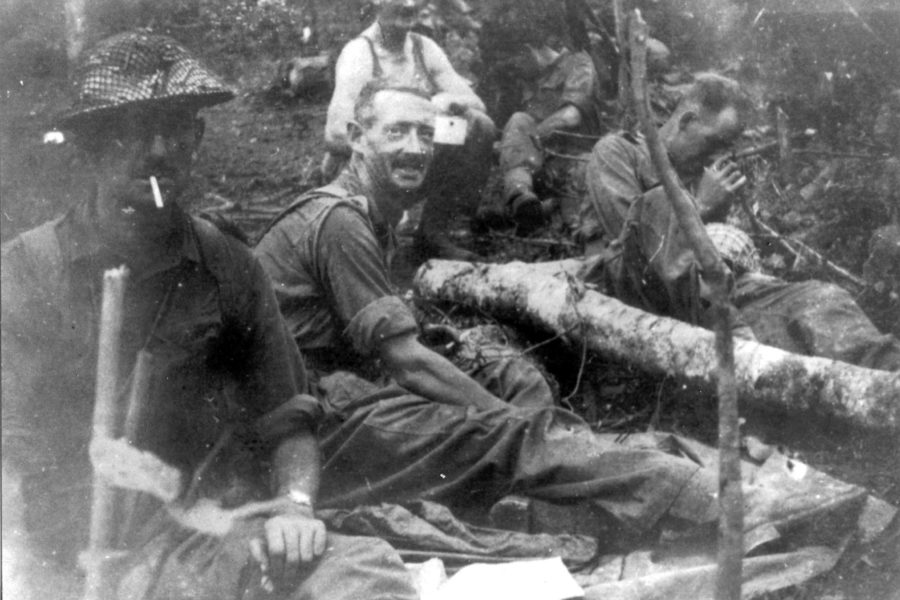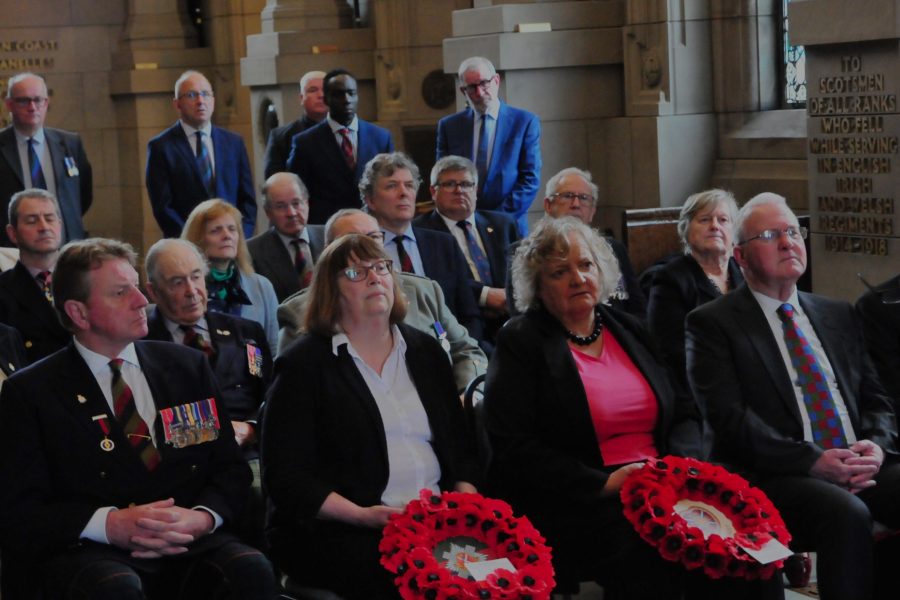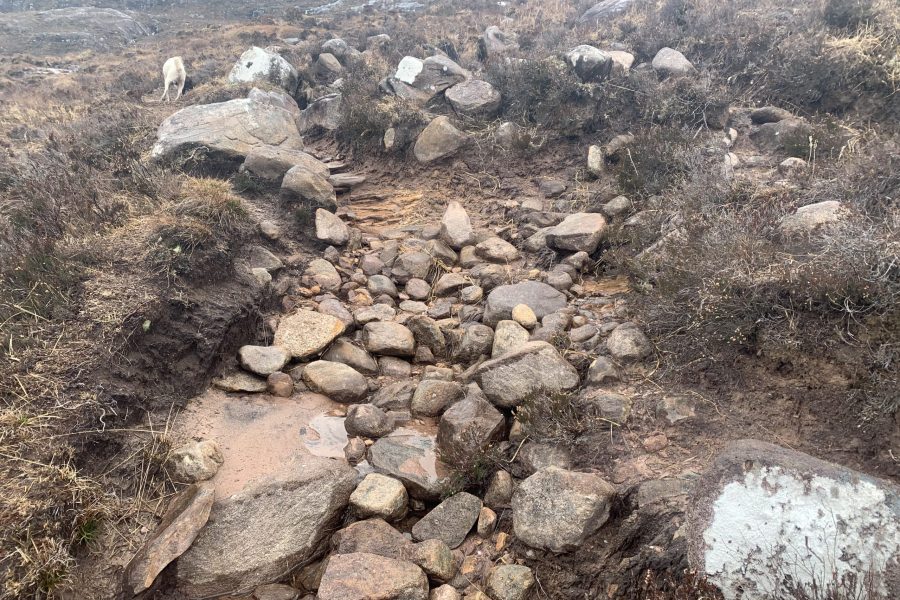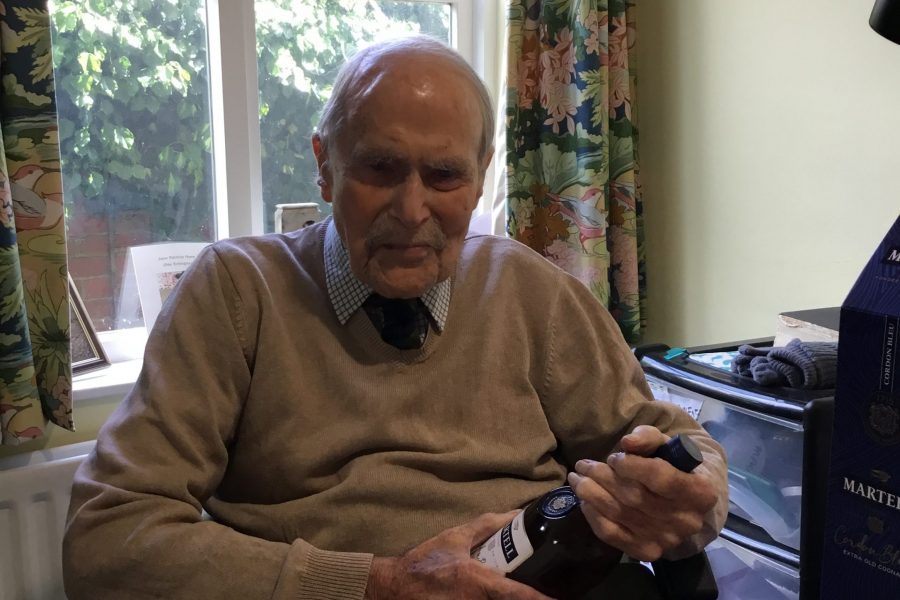Family honour Victoria Cross recipient at The Royal Scots Museum, Edinburgh Castle.
On Monday 18 September 2023, the Royal Scots Regimental Museum in Edinburgh Castle was delighted to welcome Mr Brian Gaskin and his family from Ontario, Canada. They came to view the Victoria Cross which Brian’s grandfather, Private (Pte) Henry H. Robson, originally from South Shields, had won for an act of “most conspicuous bravery” in December 1914, when aged 20, whilst serving with the Regiment in Flanders.

For Mr Gaskin, his family’s trip to Scotland has a deeper resonance. As a fourteen-year-old boy in 1965, Brian had been present at the ceremony when, after Pte Robson had passed away, his family presented his Victoria Cross to the Royal Scots Museum. Mr Gaskin has now returned with his wife, Jane, his son Kevin and grandson Luke to “visit the museum and medals and to keep the history alive”.
Pte Robson was a regular soldier in the 2nd Battalion, The Royal Scots, which had deployed to Belgium in August 1914 as part of the British Expeditionary Force that was sent to prevent the German advance. The Battalion took part in a number of significant actions as the war ebbed and flowed that autumn before an attack near Kemmel on 14 December. Badly wounded during the action for which he received the award, Pte Robson survived the war and emigrated to Canada where he raised a family.

Pte Robson was presented with his Victoria Cross by King George V and Queen Mary at Buckingham Place on 12 July 1915. The official citation reads: “Private H. H. Robson. 2nd Battalion The Royal Scots. For most conspicuous bravery near Kemmel on the 14 December 1914, during an attack on the German position, when he left his trench under a very heavy fire and rescued a wounded non-commissioned officer, and subsequently for making an attempt to bring another wounded man into cover, whilst exposed to a severe fire. In this attempt, he was at once wounded, but persevered in his efforts, until rendered helpless by being shot a second time.“
For Pte Robson’s great-great grandson, Luke Gaskin, a first visit to Scotland was a wonderful opportunity not just to see the medal, tangible evidence of his family’s history, but to see its place in wider Regimental history and how that story continues to be told today.
Lt Colonel Gordon Rae, Chairman of The Royal Scots’ Museum and Heritage Committee, presented the Gaskin family with a copy of “Pontius Pilate’s Bodyguard”, the Regiment’s three-volume history, as a memento of their visit showing the bond between the Regiment and the family.
Lt Colonel Gordon Rae said: “It was a great honour to host three generations of Private Robson’s family at the Regimental Museum today.”

Notes:
The Victoria Cross (VC) was introduced on 29 January 1856 by Queen Victoria to honour acts of exceptional gallantry during the Crimean War. It is the highest and most prestigious decoration of the British honours system and is awarded for valour “in the presence of the enemy” to members of the British Armed Forces.
Since the first awards were presented by Queen Victoria in 1857, the medal has been awarded 1,358 times; eight of these have been Royal Scots whose details are available on the Regimental website Awards: Victoria Cross & George Cross | The Royal Scots
The action near Kemmel on 14 December 1914 was part of one of the first set-piece attacks of the First World War as the manoeuvre warfare of the early months settled down to the attritional trench warfare with which many are familiar.
The Regiment’s 2nd Battalion met its objectives in heavy fighting that day, capturing two lines of enemy trenches and holding them until relieved for the loss of one officer and twenty-four soldiers killed that day. A further five officers and forty-seven soldiers were wounded plus one officer and twenty-six soldiers missing.
During the First World War over 100,000 men served in The Royal Scots (more than the size of the entire army today), of whom more than 11,000 were killed and 40,000 wounded. The Regiment acknowledges their sacrifice in a Roll of Honour first published to mark the centenary of the armistice in 1918. Rolls of Honour 1914 – 2010 | The Royal Scots
The Regiment served in every campaign except Mesopotamia and East and West Africa and was awarded 79 Battle Honours (the official acknowledgement of a military unit’s achievements in a specific action or campaign). Ten of these honours were selected to be carried on the King’s Colour. Colours & Battle Honours | The Royal Scots
The Royal Scots Museum.
The award-winning Regimental Museum occupies a prominent position inside Edinburgh Castle and, through a range of interactive displays, tells the story of The Royal Scots; 373 unbroken years of service as the Senior Regiment of the Line from its raising in 1633. Museum | The Royal Scots
Forthcoming Royal Scots events
- Remembrance Sunday. The Regiment will, as always, mark the sacrifice made by its members in the First and Second World Wars as well as subsequent conflicts around the world. It will do so at the Regimental Monument in Princes Street Gardens, Edinburgh, the Glencorse Memorial Gates in Penicuik and at further Remembrance ceremonies across its former recruiting area of Edinburgh, the Lothians and Peeblesshire.
- Dalkeith Palace. In the lead up to Remembrance Sunday, and to promote the continuing relevance of Remembrance today, the Regimental Museum will host a temporary display between 4 and 8 November at Dalkeith Palace. This is a free-to-enter event in conjunction with various partners including Poppy Scotland and The Royal Scots Club.

In 2006, The Royal Regiment of Scotland was formed from its predecessor Scottish Infantry Regiments; after 373 years of unbroken service The Royal Scots left the British Army’s order of battle.
Additional Website addresses for further information:
- Home Page: http://www.theroyalscots.co.uk/
- Regiment’s history: http://www.theroyalscots.co.uk/history/










































